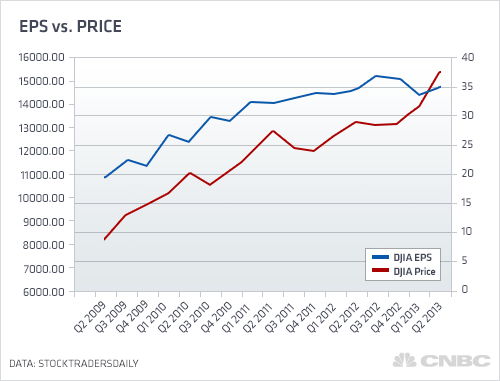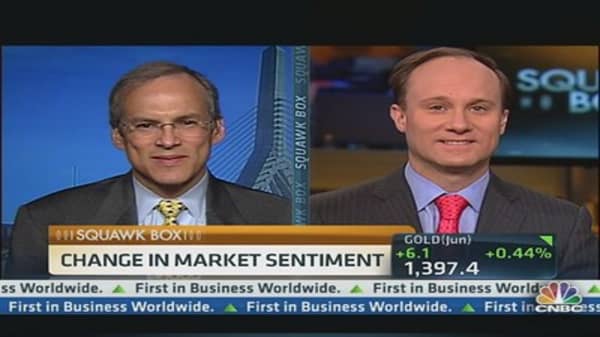While earnings have grown only modestly over the past few quarters, stock prices have surged, sending what could be a disconcerting message to investors.
The Dow industrials, in particular, have seen a 17 percent jump in 2013 alone even as earnings in the past two quarters have grown little.
That trend disrupted a formerly symbiotic relationship between earnings and stock prices and is indicating that the bluechip average is in for a substantial pullback, according to Tom Kee, who runs the StockTradersDaily investor web site.
"They've been moving in tandem since 2009, until recently. Earnings per share for the Dow Jones industrial average have flatlined and the price has taken off," Kee said. "There is something happening here that defines a bubble."
(Read More: Rallies End Sometime, but This One May Not End Soon)






